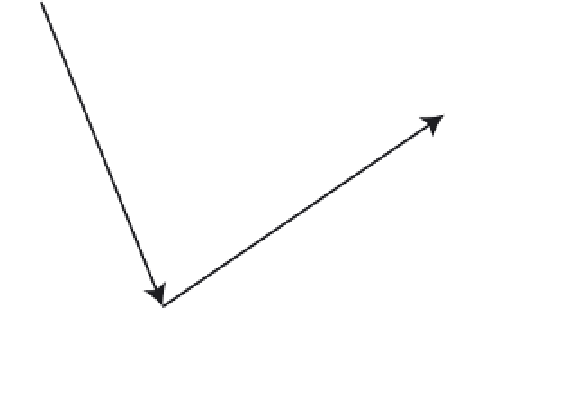HTML and CSS Reference
In-Depth Information
To experiment with this example, change the angle around. See for yourself that you can make the ball
travel at any speed and any angle by simply changing the two numbers.
Now, let's take another look at this example in terms of vectors.
Vector addition
Vector addition is when you have two vectors working in a system and you want to find the resultant
overall vector. Here, you have a vector on the x axis, another vector on the y axis, and an overall velocity
vector. You add vectors by simply placing them together head to tail. The resultant vector is the line you
can draw from the starting point of the first vector on the chain to the ending point of the last one. In Figure
5-6, you can see three vectors added together and their resultant vector.
Resultant
Vector
Vector 1
Vector 3
Vector 2
Figure 5-6.
Vector addition
It doesn't matter in what order you place the vectors; the result is always the same. And time has no part in
it. You can say an object moved this way, it moved that way, and then it moved the other way, in any
order. Or you can say that it moved in all three ways at once. The result is that it wound up moving at a
certain speed in a certain direction when all was said and done.
Let's go back to our example. If you lay down the x-axis velocity vector, and then put the y-axis velocity
vector on the end of that, the resulting line is the overall velocity. Figure 5-7 illustrates the velocities as
vectors.



